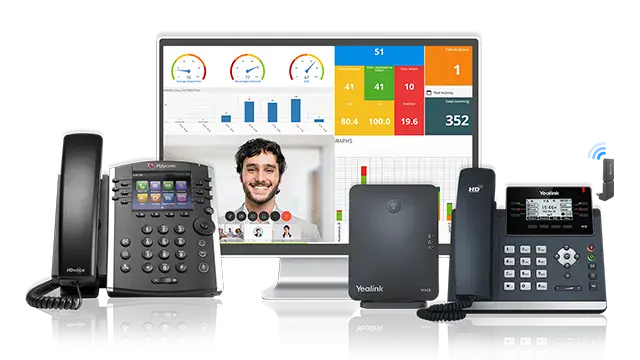How to Qualify for the Solar Panel Tax Credit in 2025: A Complete Guide
As we move into 2025, the solar panel tax credit continues to offer homeowners and businesses a valuable opportunity to save on solar energy installation costs. Known as the Investment Tax Credit (ITC), this program allows taxpayers to deduct a percentage of the cost of installing a solar energy system from their federal taxes. If you're considering going solar in 2025, it's crucial to understand the requirements and steps involved in qualifying for the tax credit. In this comprehensive guide, we break down how you can maximize savings and ensure you meet all the necessary conditions for claiming the solar panel tax credit.
What is the Solar Panel Tax Credit?
The solar panel tax credit (also known as the Investment Tax Credit, ITC) is a federal incentive that reduces the cost of installing a solar energy system by allowing taxpayers to deduct a portion of the installation expenses from their federal tax liability. This credit applies to both residential and commercial properties, making it a highly sought-after option for individuals and businesses looking to invest in solar power.
- Percentage of Credit: In 2025, the ITC is set at 30% of the total cost of installing a solar system.
- Eligible Installations: The credit applies to new solar systems, including photovoltaic panels, solar water heating systems, and solar roof tiles.
1. Eligibility Criteria for the Solar Panel Tax Credit
To qualify for the solar panel tax credit, certain conditions must be met. These include both ownership requirements and installation standards. Here’s a breakdown of the key eligibility criteria for 2025:
- Ownership of the Solar System: You must own the solar panel system. If you lease the system or have a power purchase agreement (PPA), you are not eligible for the tax credit.
- Qualified Solar Equipment: The equipment must be installed on your property and must meet federal and state standards.
- Primary Residence or Business Property: The system can be installed at a residential property, a second home, or a business property.
2. How Much You Can Save: Tax Credit Breakdown
In 2025, the solar panel tax credit provides significant savings. The tax credit covers a percentage of your total installation costs, which can include both hardware and labor costs. Below is a breakdown of how the tax credit applies to different installation scenarios.
| Installation Cost | Tax Credit (30%) | Amount After Credit |
|---|---|---|
| $10,000 | $3,000 | $7,000 |
| $15,000 | $4,500 | $10,500 |
| $25,000 | $7,500 | $17,500 |
| $40,000 | $12,000 | $28,000 |
As shown in the table, the larger your installation, the higher the tax savings you can receive, directly reducing your total system costs.
3. Step-by-Step Guide to Claiming the Solar Panel Tax Credit in 2025
To ensure you qualify for the solar panel tax credit and claim it correctly on your taxes, follow these essential steps:
Step 1: Install a Qualified Solar Panel System
Make sure your solar installation meets the requirements set by the IRS. It must be installed in 2025, and the equipment must be new.
Step 2: Keep Detailed Records of the Installation
Collect invoices, receipts, and contracts from your solar installer. The IRS may request this documentation to verify the total cost of the installation and its eligibility for the tax credit.
Step 3: File IRS Form 5695
To claim the credit, you’ll need to complete IRS Form 5695 (Residential Energy Credits) when filing your tax return. This form will allow you to calculate the amount of your credit based on the installation cost.
Step 4: Claim the Credit on Your Tax Return
After filling out Form 5695, include it with your federal income tax return to apply the credit. If you are unsure about completing the forms, consult a tax professional to ensure accuracy.
Step 5: Monitor Future Changes
Be aware of any potential changes to the solar tax credit after 2025. Keep up with updates to the ITC program to take advantage of any future benefits or adjustments.
4. Tax Credit for Commercial Solar Installations
In addition to residential properties, the solar panel tax credit is available for businesses investing in solar energy systems. For commercial installations, the ITC can cover 30% of the installation costs, which includes both hardware and labor expenses.
- Eligibility: Businesses must own the solar system and install it on their commercial property. Lease agreements or PPAs do not qualify.
- Additional Benefits: Commercial property owners may also qualify for state-level incentives or rebates, which can further reduce the overall cost of solar energy systems.
5. Solar Tax Credit for Nonprofit Organizations and Government Entities
Nonprofit organizations, schools, and government entities can also benefit from the solar panel tax credit. Though they may not owe federal income taxes, these organizations can still benefit by transferring or selling the credit to other entities through a tax equity financing arrangement.
Conclusion: Maximize Your Solar Savings in 2025
The solar panel tax credit offers a fantastic opportunity for individuals, businesses, and organizations to significantly reduce the upfront costs of solar installations. By understanding the eligibility requirements, following the necessary steps, and ensuring proper documentation, you can maximize your savings on your solar investment.
Whether you're a homeowner or a business owner, the ITC is a powerful incentive that makes going solar more affordable than ever. In 2025, don't miss out on this opportunity to save both on energy costs and federal taxes.
Explore

Best Home Solar Panel Installation Services 2025

How to Qualify for the Best Home Improvement Loans: Tips and Advice

How to Choose the Best Home Solar System for Your Needs: A Complete Guide

Where Can I Buy Cheap and Good Quality Solar Panels? A Comprehensive Guide

How to Get a Medicare Advantage Plan: Complete Guide for 2024 & 2025

Small Business Digital Phone Systems: A Complete Guide

What Is ERP? A Complete Guide to Enterprise Resource Planning

Top Safari Tours in Africa for American Travelers: A Complete Guide
